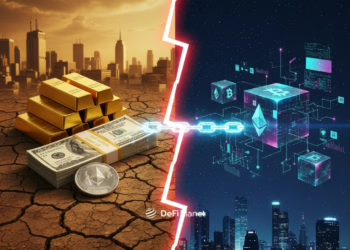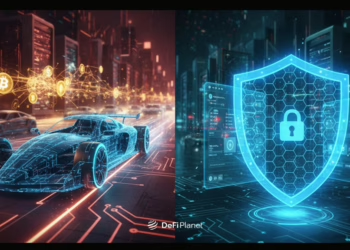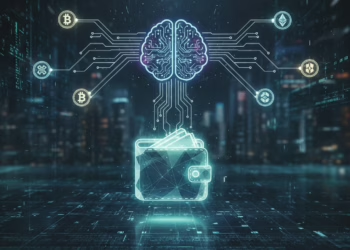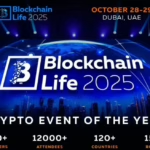Blockchain technology has been in existence for a while, and its origin story is inextricably linked to Bitcoin. It has evolved beyond just being a technology that hosts cryptocurrencies. Blockchain technology has a broad spectrum of use cases that have far-reaching impacts on several aspects of life.
Blockchain technology has the potential to revolutionize supply chains, voting and governance systems, the financial sector, health care, and much more. It has also given rise to new ecosystems such as crypto gaming, non-fungible tokens (NFTs), and decentralized autonomous organizations (DAOs). The inherent qualities of blockchain technology, such as transparency, immutability, and decentralization, are the primary reason for its widespread adoption.
This article analyzes the use cases and applications of blockchain technology, highlighting its impacts on different facets of society.
What Are The Use Cases Of Blockchain Technology?
Several sectors are experimenting with incorporating the features of blockchain technology into their architecture to obtain optimal results, and some of them will be highlighted below.
• Cross-Border Transactions
Transferring funds across different regions can be a Herculean task for many, especially with the red tape that people need to jump over before they can transfer any funds. As a result of increased globalization, people can seamlessly purchase items or services from brands that are thousands of miles away. They must make payments, which might be challenging due to the cross-border nature of the transactions. Sometimes, payment channels end up being slow or expensive.
Blockchain makes this easier as people can make payments without the need for a third party. Transactions are swift, affordable, and efficient.
• Smart Contracts
The advent of blockchain technology birthed the concept of smart contracts. This is a type of contract that is automated and operates without a third party. Using smart contracts ensures that people can carry out transactions without an intermediary. When a condition is added to the code of a smart contract, it is triggered if certain events occur, effectively establishing trust in the system.
• Internet of Things (IoT)
Blockchain technology enhances the efficiency of the Internet of Things in many ways.
It allows individuals to easily monitor assets, track the movement of goods in transit, and much more.
Data collected using IoT features can be immutably recorded in the blockchain.
The general public has access to accurate data that cannot be altered.
• Management of records
Blockchain technology enhances record management and the authenticity of the information contained in records. The significance of the information differs depending on where the records are stored. Blockchain technology can be used to prevent hackers or insiders from modifying information, reduce fraudulent entries, and prevent people from duplicating information.
• Voting and Governance System
The Decentralized Autonomous Organization (DAO) model is another form of governance structure created using blockchain technology. This type of governance structure ensures that members of the community decide what happens in the ecosystem.
They vote on proposed changes and submit recommendations without interference from third parties. People who own the platform’s native token are eligible to participate in governance activities.
Voting is more transparent because votes are made public and impersonation is impossible. Because of the blockchain’s transparency, it has been touted as the solution to election-related problems.
• Non-Profit Agencies
Charity organizations are not trusted by the general public as a result of past incidents of money laundering, fraud, embezzlement, and other crimes. Transparency is a major issue in these organizations, as donors and the general public are clueless about how donations are utilized. Some charity organizations have been exploited in the past to fund the extravagant lifestyles of their founders or managers. Some countries offer non-profits more latitude than regular organizations, allowing them to get away with various misdemeanors.
When blockchain technology is applied to the operations of non-profits, it promotes transparency by allowing donors to see how their donations are used. It restores trust to an otherwise distrusted field.
• Capital Markets
Blockchain has enabled the expansion of decentralized financial markets and can improve the capital market model. The incorporation of this technology into the capital market can increase its functionalities, thus improving the way it operates. When this is implemented, traders and investors can benefit from a faster clearing and settlement process, improvements in capital market operations, as well as increased transparency.
• Insurance
Smart contracts have improved insurance while also introducing the concept of decentralized insurance.
The events that should trigger a payout are coded in smart contracts, especially when it is a parametric insurance platform. When the event occurs and the smart contract detects it through the data fed to it via oracles, an instant payout is made. Numerous insurance schemes rely on blockchain technology.
• Healthcare
Patient data is used to help healthcare professionals carry out their duties. A patient’s history and general information are taken into account before medication is prescribed or care is provided. The lack of information-sharing channels is a problem with the existing system employed by healthcare facilities. Information sharing between hospitals and other healthcare providers is tough.
Sometimes, whether consciously or unknowingly, a patient’s health record is manipulated, which can have disastrous consequences.
Blockchain technology makes it easier for multiple healthcare facilities to share patient details in real-time while lowering the possibility of data corruption. Because of the immutability of blockchain, it is impossible to change previously entered data in patient records.
• Identity Management
The utility of blockchain has expanded to include identity management. There have been multiple incidents of individuals fabricating their identities, making it difficult to ascertain the authenticity of a presented identity. Once data is stored on the blockchain, it can not be altered. Individuals would only be required to provide a means of identification on the blockchain to prove their identity or go through a KYC process elsewhere. This significantly minimizes the rate of exploitation caused by identity fraud.
• Central Bank Digital Currencies (CBDCs)
Blockchain technology and cryptocurrencies are conceptualized as Central Bank Digital Currencies (CBDCs). This is a type of digital currency that is issued by the central bank of a region and has the legal backing of the government. It is different from cryptocurrencies because of its links to the government.
Residents of the country can utilize it to settle various transactions, and they are legally permissible. An example is the eNaira, which is issued by the Central Bank of Nigeria.
• Crypto Gaming
Crypto gaming, especially the Play-to-Earn (P2E) variant, has taken the world by storm. The idea of making money while playing a game and having a good time has piqued the interest of many people.
The traditional gaming scene is usually based on the concept of using one’s money to buy skins and other items that are needed to play the game. Sometimes, they may be free-to-play, but an earning system is absent.
The gameplay platform of a P2E game is created on a blockchain with the inclusion of a utility token and possibly NFTs.
Typically, NFTs represent in-game assets such as lands, skins, weapons, pets, and other treasures.
The gameplay determines how the player utilizes the NFTs.
Most of the time, these NFTs can be sold in an in-house marketplace or secondary NFT marketplaces. NFTs from popular gaming ecosystems such as Axie Infinity are coveted and sell for a higher price. In different P2E games, carrying out designated activities results in the player earning rewards, which may come in the form of native tokens or NFTs.
The Play-to-Earn gaming guild is another innovation that has emerged from crypto gaming. This type of guild serves as a haven for gamers who lack the in-game assets required to gain access to the gaming platform. For example, Axie Infinity requires players to have at least three Axies before they can play the game.
Because of the monetary value of the Axies, the minimum requirements run into thousands of dollars. Through scholarships, gaming guilds provide participants with the NFTs they need to play the game. They also provide them with the knowledge and tactics needed to maximize their revenue. A revenue-sharing model is used, with the players receiving a percentage of the revenues and the gaming guild receiving the remainder. In some cases, the gaming guild entices owners of these in-game assets to lease their NFTs to the guild for a specified period in exchange for rewards.
In Conclusion,
- Blockchain technology is changing the way that things are being done.
- Its immutability has made it a sought after technology because once data is added to the block, it can’t be altered.
- Smart contract is also a technology that is improving different traditional fields while creating new realms.
- The utility of blockchain can be seen in the financial terrain, gaming ecosystem, health care, voting and governance, identity management and much more.
If you would like to read more articles like this, visit DeFi Planet and follow us on Twitter, LinkedIn, Facebook, and Instagram.





















